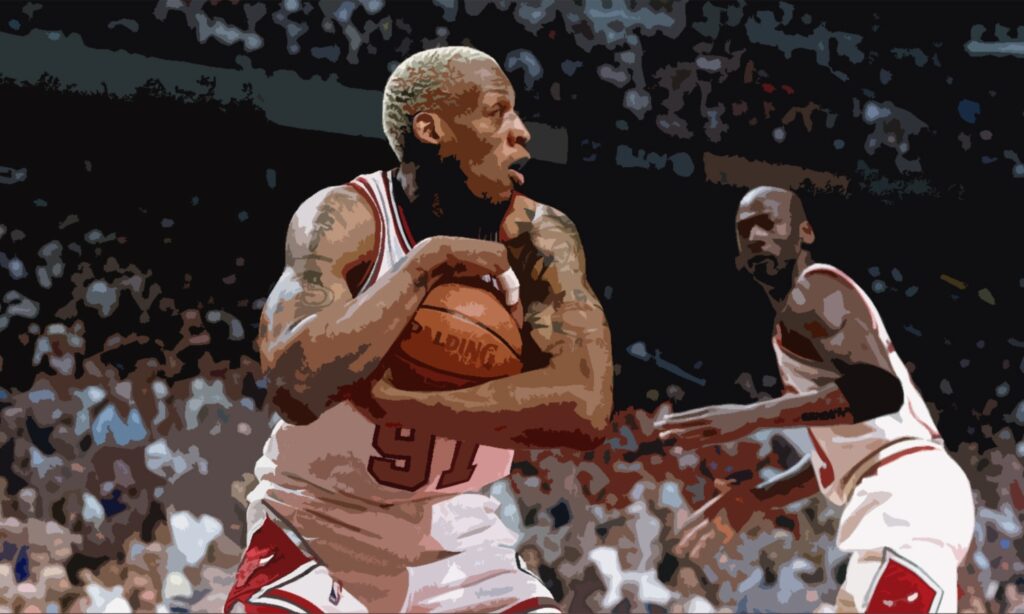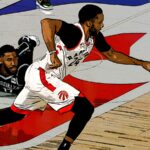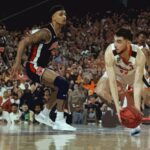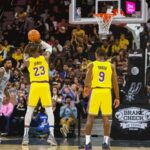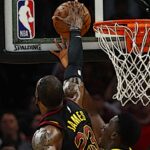There are many ways players can contribute to the game of basketball.
While scoring is the most recognized stat for measuring a player’s success, there are other skill sets they must develop.
We are talking about passing, blocking, stealing and collecting rebounds.
In fact, when a player receives double digits in two out of these 5 categories, the NBA records them of having earned a double-double.
If they hit double digits in three categories, they record a triple double.
But let’s break the elements down. Passing is usually attributed to a player’s offensive skill set.
Blocking and stealing are important components defensive abilities.
Meanwhile, rebounds can come from both the attacking and defending ends.
Offensive rebounds allow the team attacking team another chance at a basket, while defensive rebounds stop the opposing team dead in their tracks.
If you still don’t know what a rebound is, I characterize in the bold paragraph below.
For some, you might have specific questions on what exactly constitutes a rebound. I cover this information as well, so keep on reading…
What is a Rebound in Basketball?
In basketball, a rebound is the act of gaining possession of the ball after a missed shot. An offensive rebound is when the attacking team recovers the ball, while a defensive rebound is credited to the team defending their end. Rebounds require good timing, positioning, and the ability to jump and grab the ball at its highest point.
The most confusing aspect of the rebound is what the NBA considers a missed shot.
Any time the ball hits the rim or the backboard off a shot, the first player to recover the ball will be credited with the rebound.
The same applies for air balls too. Even though the ball never comes close to the basket, the shot attempt is still taken into consideration.
While a blocked shot is not considered a rebound, the recovery of the ball afterwards can be.
Should the ball go out of bounds after the blocked shot, the team that regains possession on the in-bound will be credited with the rebound.
Note that if the ball is ripped from the shooter’s hands while attempting the shot, the referee will deem the play as a “shot block-steal”.
In this case, no rebound is recorded. The player who gets the ball stolen will be slapped with a turnover.
Lastly, if the attacking player standing at the net tips the ball into hoop on the missed shot attempt, they will be credited with the rebound and the field goal.
How does the NBA Report on Rebound Stats?
Rebounds are reported the same way for points, steals, blocks and assists for every player.
The individual stats show an average per game value in rebounds.
That value is rounded to the first decimal as such: 12.5 Rebounds Per Game (aka REB or RPG).
To distinguish between offensive and defensive rebounds, there are dedicated columns for each respectively titled as OREB and DREB.
The same rounding number is used to show each player’s per game average.
Lastly, there is another metric known as rebounding percentage.
Rebounding percentage is the measure of how many available rebounds a player collects when they are on the court.
To calculate the %, you must divide the player's total rebounds by the total number of rebounds available when they were on the court.
This gives us an idea of how involved and efficient a player is at collecting both offensive and defensive boards.
All-Time NBA Leader for Rebounds
While researching the career leaders for rebounds, two elements stood out to me.
First off, the NBA didn’t differentiate between offensive and defensive rebounds in the early days.
So, while we know some of the top rebounders of all time, we can’t put an exact number on each rebound type.
Most players outpaced their defensive rebounds by a margin of 2-1 or 3-1 compared to offensive rebounds.
The most obvious reason is that offensive players need to be in a position of retreat if the attempted shot is missed.
Furthermore, the defensive players are generally better positioned to defend their net.
Without further ado, I present to you the top 10 leaderboard for rebounds.
NBA Top 10 Career Leaders for Turnovers
| Player Name | Career Turnovers | |
|---|---|---|
| 1 | Wilt Chamberlain | 23,924 |
| 2 | Bill Russell | 21,620 |
| 3 | Kareem Abdul-Jabbar | 17,440 |
| 4 | Elvin Hayes | 16,279 |
| 5 | Moses Malone | 16,212 |
| 6 | Tim Duncan | 15,091 |
| 7 | Karl Malone | 14,968 |
| 8 | Robert Parish | 14,715 |
| 9 | Kevin Garnett | 14,662 |
| 10 | Dwight Howard | 14,627 |
For the official list, check out the NBA link here.
Most Rebounds in a Game
The record for most rebounds in a game should come as no surprise as it belongs to Wilt Chamberlain.
Chamberlain managed 55 boards in a game between his Philadelphia Warriors and the Boston Celtics, on November 24, 1960.
This is considered one of the most impressive records in NBA history and is unlikely to be broken anytime soon.
In fact, no modern-day NBA player has even come remotely close to putting up rebound numbers similar to this.
The best I’ve seen was Dennis Rodman reaching 34 boards back in the 90’s.
As a note, Bill Russell owns the next three spots with 51-49-49 rebounds with the Boston Celtics.
Russell was another NBA icon.
Final Thoughts
While the top 10 list is filled with some of the most memorable players of all time, there is one player that surfaces to my mind.
That player is Dennis Rodman, who ranks 23rd overall for rebounds.
Perhaps it’s because he played with Michael Jordan and the Chicago Bulls.
He helped them win three more championships following Jordan’s return to the league.
It also could be because he was eccentric or dated high profile celebrities like Madonna and Carmen Electra.
Another claim to fame is when he wore a wedding dress and married himself.
But there is no denying his rebound capabilities stood out like his different hair colors and painting fingernails on the court.
Rodman was the rebound king in my eyes during that era. And he backed it up by win 5 NBA championships in total.
I even got the chance to meet him in Florida while eating dinner on a random occasion.
To me, he’ll always be the guy that brought rebounding in the limelight.
